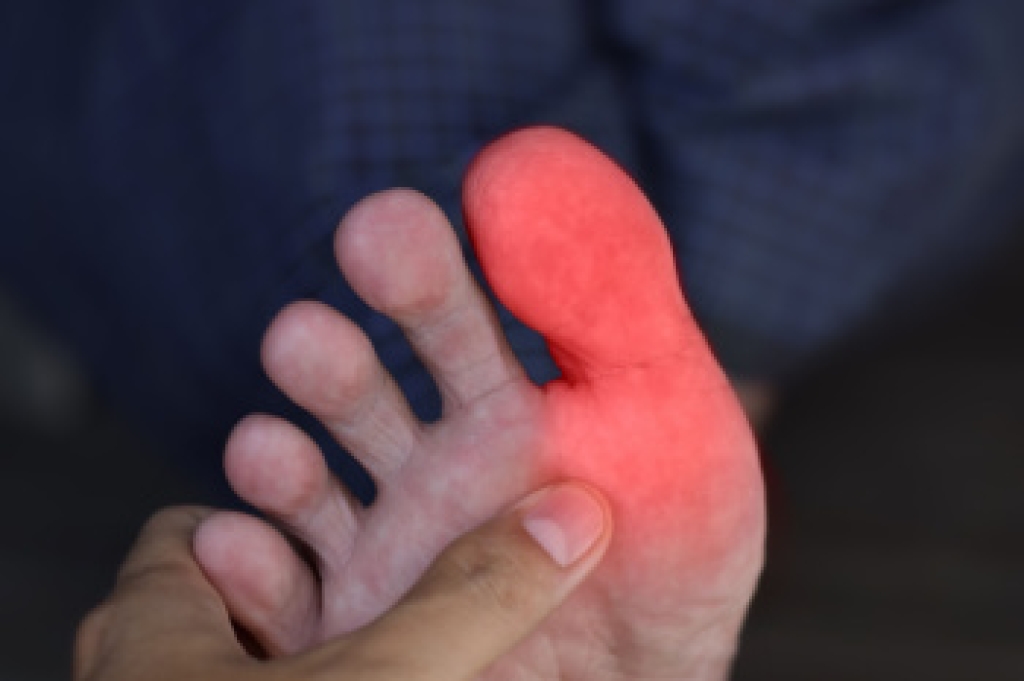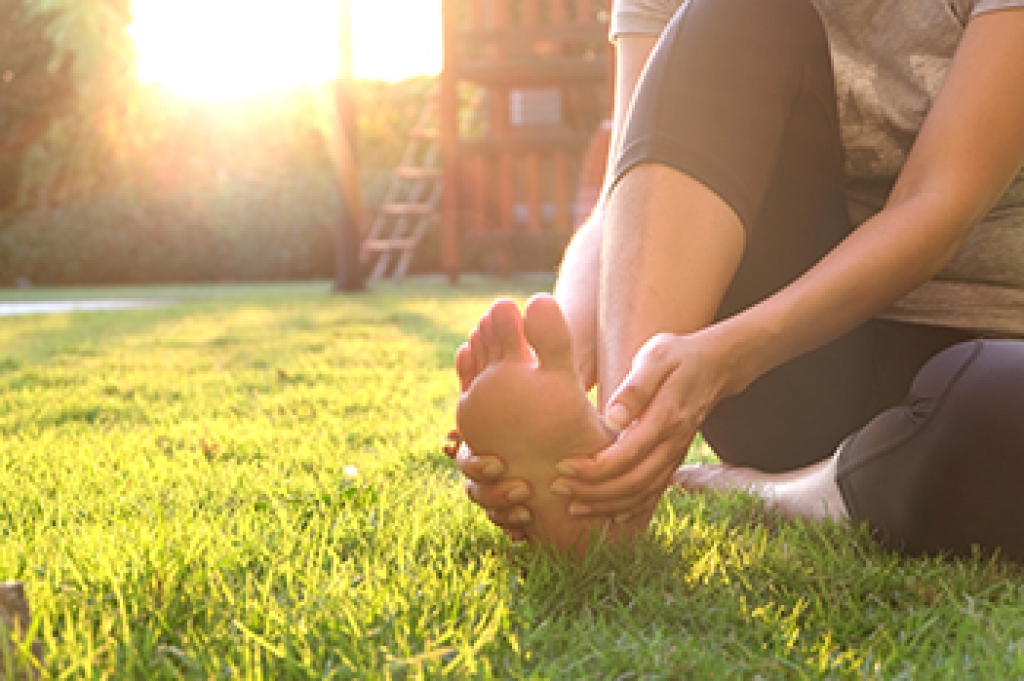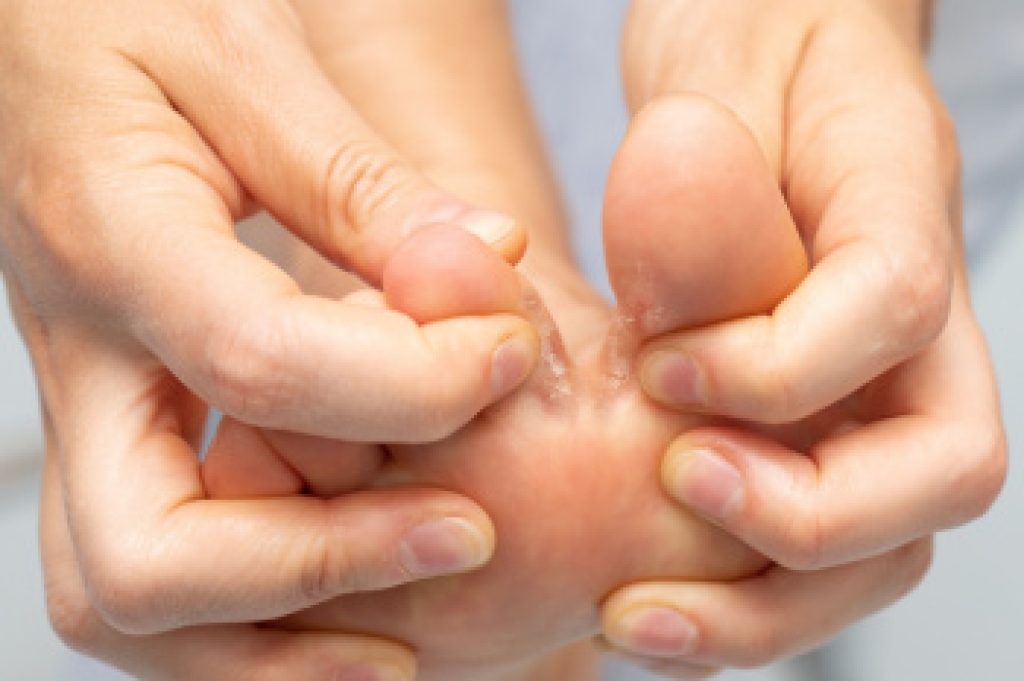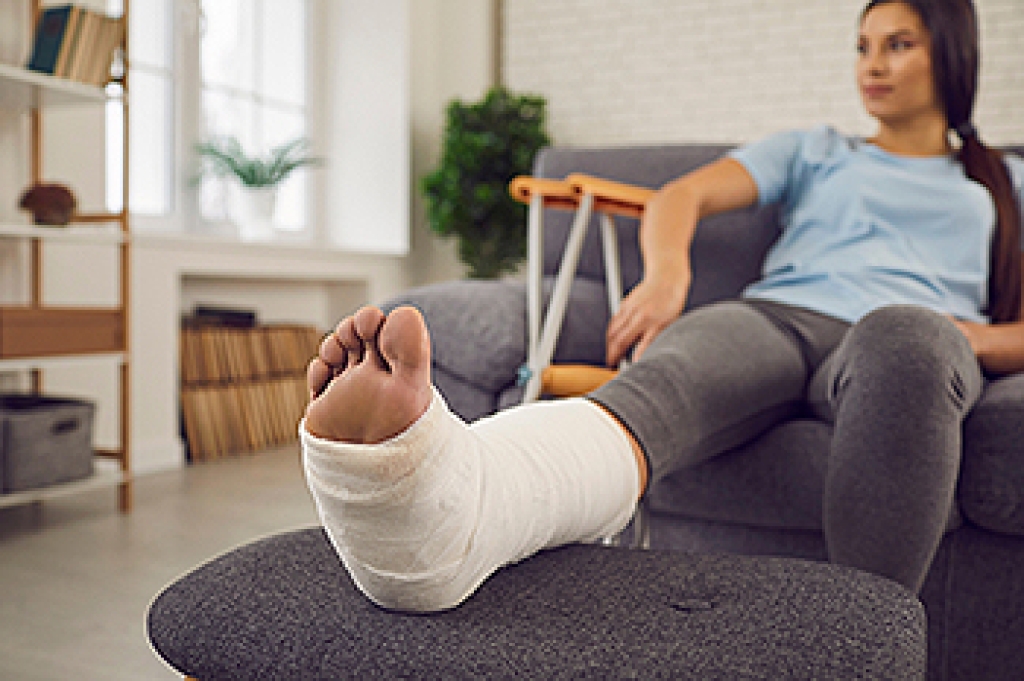Connect With Us
Blog
Causes of Big Toe Joint Pain

Pain in the big toe joint can have many causes. It often happens when the bones, tendons, or soft tissues around the first metatarsophalangeal, or MTP, joint become strained or inflamed. Conditions like gout, arthritis, bunions, or sesamoiditis can make the MTP joint stiff, swollen, and painful when walking. Repeated stress from sports, tight shoes, or wearing high heels can also irritate this joint, causing turf toe, tendonitis, or bursitis. A fracture or sprain can result from a direct injury, like stubbing the toe or dropping something heavy on it. If left untreated, pain in the big toe joint can limit movement or cause deformity. A podiatrist can examine the foot, order X-rays, and determine the cause of pain to prevent further joint damage. Treatment can relieve pressure on the toe, improve alignment, or involve surgery if needed. If you have pain in the joint of your big toe, it is suggested that you make an appointment with a podiatrist for a diagnosis and treatment.
Toe pain can disrupt your daily activities. If you have any concerns, contact Scott Samera, DPM of Samera / Foot + Ankle. Our doctor can provide the care you need to keep you pain-free and on your feet.
What Causes Toe Pain?
Most severe toe pain is caused due to a sports injury, trauma from dropping something heavy on the toe, or bumping into something rigid. Other problems can develop over time for various reasons.
Toe pain can be caused by one or more ailments. The most common include:
- Trauma
- Sports injury
- Wearing shoes that are too tight
- Arthritis
- Gout
- Corns and calluses
- Hammertoe
- Bunions
- Blisters
- Ingrown toenails
- Sprains
- Fractures (broken bones)
- Dislocations
When to See a Podiatrist
- Severe pain
- Persistent pain that lasts more than a week
- Signs of infection
- Continued swelling
- Pain that prevents walking
Diagnosis
In many cases the cause of toe pain is obvious, but in others, a podiatrist may want to use more advanced methods to determine the problem. These can range from simple visual inspections and sensation tests to X-rays and MRI scans. Prior medical history, family medical history, and any recent physical traumatic events will all be taken into consideration for a proper diagnosis.
Treatment
Treatments for toe pain and injuries vary and may include shoe inserts, padding, taping, medicines, injections, and in some cases, surgery. If you believe that you have broken a toe, please see a podiatrist as soon as possible.
If you have any questions please contact our office located in Lake City and Branford, FL . We offer the newest diagnostic and treatment technologies for all your foot and ankle needs.
Common Foot Problems

Many people experience common foot problems that can affect daily comfort and mobility. Athlete’s foot is a fungal infection causing itching, redness, and peeling, often treated with antifungal creams and keeping feet dry. Blisters result from friction or pressure, relieved by padding, protective footwear, and proper hygiene. Bunions are bony bumps at the base of the big toe caused by genetics or tight shoes, eased with orthotics, wider shoes, and sometimes surgery. Corns develop from repeated pressure and friction, relieved with cushioning, wearing proper footwear, and professional removal. A podiatrist can diagnose these conditions, provide targeted treatments, recommend footwear, and offer preventive strategies to protect foot health. If you have any type of foot or ankle pain, it is suggested that you consult a podiatrist who can offer effective treatment solutions.
Foot Pain
Foot pain can be extremely painful and debilitating. If you have a foot pain, consult with Scott Samera, DPM from Samera / Foot + Ankle. Our doctor will assess your condition and provide you with quality foot and ankle treatment.
Causes
Foot pain is a very broad condition that could be caused by one or more ailments. The most common include:
- Bunions
- Hammertoes
- Plantar Fasciitis
- Bone Spurs
- Corns
- Tarsal Tunnel Syndrome
- Ingrown Toenails
- Arthritis (such as Gout, Rheumatoid, and Osteoarthritis)
- Flat Feet
- Injury (from stress fractures, broken toe, foot, ankle, Achilles tendon ruptures, and sprains)
- And more
Diagnosis
To figure out the cause of foot pain, podiatrists utilize several different methods. This can range from simple visual inspections and sensation tests to X-rays and MRI scans. Prior medical history, family medical history, and any recent physical traumatic events will all be taken into consideration for a proper diagnosis.
Treatment
Treatment depends upon the cause of the foot pain. Whether it is resting, staying off the foot, or having surgery; podiatrists have a number of treatment options available for foot pain.
If you have any questions, please feel free to contact our office located in Lake City and Branford, FL . We offer the newest diagnostic and treatment technologies for all your foot care needs.
When Athlete’s Foot Refuses to Heal

Athlete’s foot is more than an itch. It is a stubborn skin infection that thrives in warm, damp places like shoes, showers, and gyms. It often begins between the toes as peeling or redness, but can spread to the soles and nails, if ignored. Beyond discomfort, untreated athlete’s foot can lead to cracked skin that allows bacteria to enter, causing deeper infections. Modern treatments target both the surface fungus and the environment it loves, using topical or oral medications and moisture-control strategies to prevent recurrence. Clean, dry socks and breathable shoes make a real difference in keeping feet healthy. If your feet continue to itch, flake, or burn despite over-the-counter care, it is suggested that you visit a podiatrist for a tailored treatment plan and relief that lasts.
Athlete’s foot is an inconvenient condition that can be easily reduced with the proper treatment. If you have any concerns about your feet and ankles, contact Scott Samera, DPM from Samera / Foot + Ankle. Our doctor will treat your foot and ankle needs.
Athlete’s Foot: The Sole Story
Athlete's foot, also known as tinea pedis, can be an extremely contagious foot infection. It is commonly contracted in public changing areas and bathrooms, dormitory style living quarters, around locker rooms and public swimming pools, or anywhere your feet often come into contact with other people.
Solutions to Combat Athlete’s Foot
- Hydrate your feet by using lotion
- Exfoliate
- Buff off nails
- Use of anti-fungal products
- Examine your feet and visit your doctor if any suspicious blisters or cuts develop
Athlete’s foot can cause many irritating symptoms such as dry and flaking skin, itching, and redness. Some more severe symptoms can include bleeding and cracked skin, intense itching and burning, and even pain when walking. In the worst cases, Athlete’s foot can cause blistering as well. Speak to your podiatrist for a better understanding of the different causes of Athlete’s foot, as well as help in determining which treatment options are best for you.
If you have any questions please feel free to contact our office located in Lake City and Branford, FL . We offer the newest diagnostic and treatment technologies for all your foot and ankle needs.
Recovering from a Broken Ankle

A broken ankle can occur from a fall, sports injury, or twisting motion that causes one or more of the ankle bones to fracture. Symptoms often include severe pain, swelling, bruising, and difficulty bearing weight. Because breaks can range from small cracks to complex fractures, a professional diagnosis through X-rays is essential to determine the best course of care. Treatment may involve immobilization with a cast or boot, the use of crutches, and rest to allow the bones to heal properly. More serious fractures might require surgical repair with pins or plates to realign the bones and restore stability. Targeted exercises are often given afterward to rebuild strength, balance, and flexibility. If you have sustained an ankle injury with significant pain or swelling, it is suggested that you see a podiatrist promptly for a complete evaluation and appropriate treatment plan.
Broken ankles need immediate treatment. If you are seeking treatment, contact Scott Samera, DPM from Samera / Foot + Ankle. Our doctor can provide the care you need to keep you pain-free and on your feet.
Broken Ankles
A broken ankle is experienced when a person fractures their tibia or fibula in the lower leg and ankle area. Both of these bones are attached at the bottom of the leg and combine to form what we know to be our ankle.
When a physician is referring to a break of the ankle, he or she is usually referring to a break in the area where the tibia and fibula are joined to create our ankle joint. Ankles are more prone to fractures because the ankle is an area that suffers a lot of pressure and stress. There are some obvious signs when a person experiences a fractured ankle, and the following symptoms may be present.
Symptoms of a Fractured Ankle
- Excessive pain when the area is touched or when any pressure is placed on the ankle
- Swelling around the area
- Bruising of the area
- Area appears to be deformed
If you suspect an ankle fracture, it is recommended to seek treatment as soon as possible. The sooner you have your podiatrist diagnose the fracture, the quicker you’ll be on the way towards recovery.
If you have any questions, please feel free to contact our office located in Lake City and Branford, FL . We offer the newest diagnostic and treatment technologies for all your foot care needs.
Blog Archives
- 2025
- 2024
- 2023
- 2022





